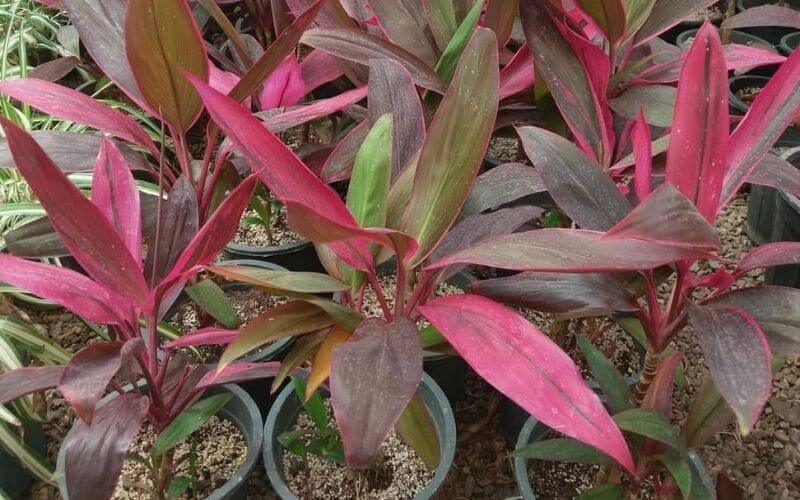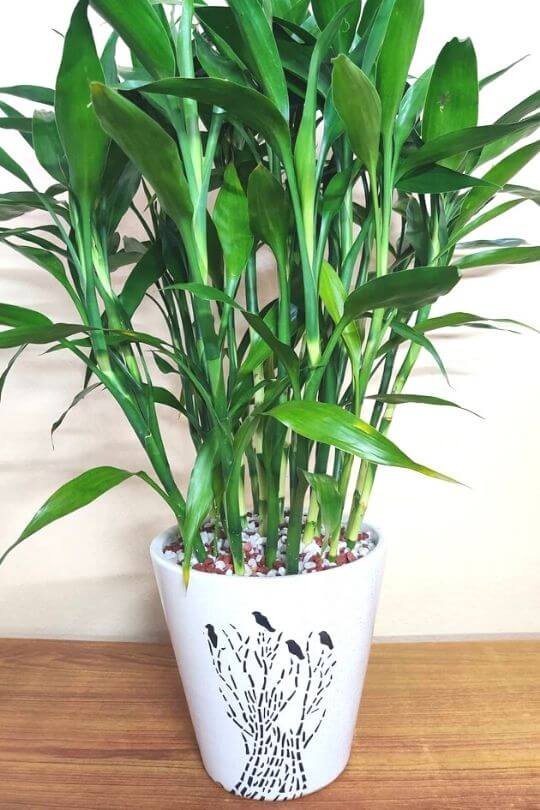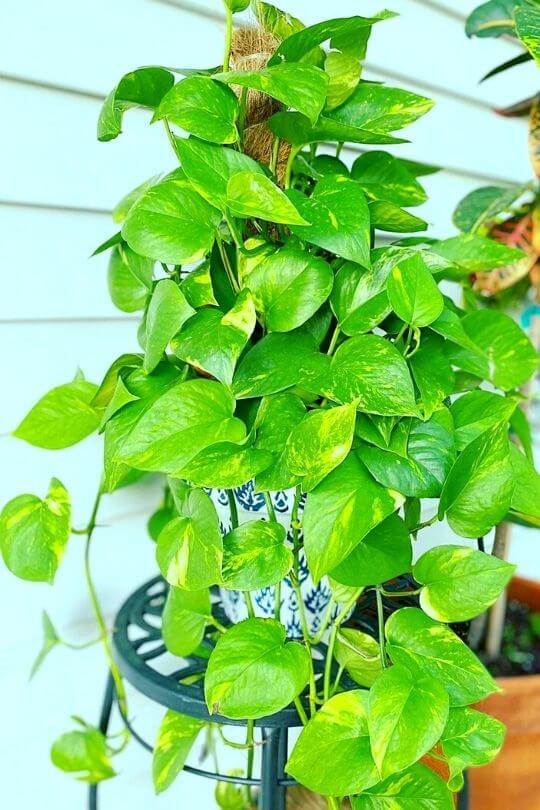Don’t worry, then; there are indoor plants that grow quite fast and which will fill your indoor spaces with beautiful green (and not just green) foliage and sometimes even flowers!
There are many houseplants that grow fast, especially herbaceous houseplants, all you need to do is choose one that will get the right light and conditions in the spot you have in mind and, of course, that will look good and in keeping with your room.
However, fast growing flowers can give you that much needed boost of indoor space If you’re in a rush to get things growing.
First of all, then, look at that corner you want to brighten up with a houseplant; then, look at the pictures in this article, the description and the tips included and you will find the fast growing houseplant your room so desperately needs!
In addition to the quick growth habit, these indoor plants are also extremely easy to care for!
How to Make Your Indoor Plant Go Fast

Even if a houseplant is naturally fast growing, it does not mean that it will do its best. Here are a few tips to make sure that your plant grows as fast as it can.
Things to Avoid to Make Your Plant Grow Fast
Then again, there are a few factors that can stop your houseplant from growing properly:
Keeping these things in mind, now, get ready to choose the plant that will make your office, sitting room or kitchen a much more beautiful and livable place…
Fastest Growing Easy Care Houseplants
Chosen for their outstanding beauty as well as for their growing speed, here are the best 15 fast growing houseplants to add to add instant charm to your home:
1. Winterbourn (Philodendron Xanadu)

Philodendron Winterbourn, commonly known as Xanadu or cut-leaf philodendron is a classic fast growing houseplant, loved for its beautiful, waxy and deep green leaves, but I would challenge you to be original…
Winterbourn, or Philodendron xanadu will set your office or living room alight with its long lobed shiny leaves, rich emerald in color and with brighter ribs running along the lobes. The leaves can reach 16 inches in length (40 cm) and 12 in width (30 cm)!
This plant is very decorative, with upright stems and then long arching leaves in clumps, which make it suitable also for large pots, where it will create an impressive exotic corner.
2. Purple Passion Plant (Gynura Aurantiaca)

Get ready to wow your guests with the amazingly deep purple color of purple passion plant, so bright and strong that it looks unreal, in fact!
With frilled margins of the most amazing violet purple color and dark green middle parts, the rich foliage of this plant will take center stage in any room you put it.
Their texture is velvet like, so, this will add to the amazing effect of “natural drapery” you can have on your desk.
It does, however have some small drawbacks; you need to be careful with watering, as it may develop root rot, and sometimes it flowers… “How can this be a drawback,” you may ask? Because the flowers have an unpleasant smell, so, you may wish to deadhead them.
3. Dieffenbachia (Dieffenbachia Oerstedii)

With the waxiest, shiniest deep green elliptical leaves you can imagine, dieffenbachia has become a very popular houseplant maybe because it even looks like an artificial, plastic plant thanks to its amazingly smooth texture.
There is a light colored rib at the center of the leaf that draws your eyes along the long and large leaves towards the point, then, regular grooved veins that give it a slightly undulated shape as they grow in opposing pairs on green stems with an upright habit. The effect is very lush and exotic, perfect for an office.
4. Spider Plant (Chlorophytum Comosus)

Add a touch of elegance to your living room with spider plant, which, with its long and pointed leaves coming in tufts of from a central rosette and draping off the margins of pots and containers, also looks great on shelves and in hanging baskets.
The long, blade like leaves are light lime green in the middle and cream at the margins, which gives them a good architectural and sculptural presence.
5. Wandering Jew (Tradescantia Pallida)

Super fast growing and unfussy, wandering Jew is an excellent houseplant with a lot of character! In fact, its long, partly trailing branches will have beautiful lanceolate leaves with the most amazing colorful stripes: cream, green, magenta and purple!
The coloring may depend on lighting, but this plant will always be an eye catcher and it can grow even in shallow pots or hanging baskets. And if you want, you can even grow it on your terrace.
6. Dumb Camille (Dieffenbachia Sanguine Var. Sanguine ‘Camille’)

An original variety of dieffenbachia, dumb Camille has a very special quality: the leaves are snow white with green edges! You can imagine what an eye catcher it will be if you have an elegant, even minimalist office or living room.
The coloring may change according to the specimen and the lighting, from white stripes or even “shards” to leaves that are almost fully white with just a thin rim of green all around.
7. Asparagus Fern (Asparagus Setaceus Plumosus)

With an amazing lacy texture, elegant and very fast growing, asparagus fern is a delicate looking plant with leaves as light as butterfly wings that will float in the air of your living room like gently bending and waving sails on thin and slender upright stems.
The feathery leaves may also partly trail on the sides of your pots, forming silk veils of rich emerald green.
This is a plant that expresses a refined, sophisticated taste, non intrusive in its appearance and yet always regaling you with an intricacy of shapes and texture to keep your guests gazing for hours!
8. Ti Leaf (Cordyline Fructosa)

Also called Hawaiian ti plant, ti leaf looks like a palm with broad and long, leaves arranged in a spiral around the stem, of an extremely smooth, shiny and glossy texture. Each leaf can be up to 24 inches long (60 cm) and it has a beautiful rib in the middle.
The color too is very attractive; usually dark emerald green, they can also turn purple! This is also a flowering plant, producing long panicles of pink to purple flowers that then produce red, round and shiny fruits.
9. Lucky Bamboo (Dracaena Sanderiana)

Called “lucky bamboo”, it is not actually a bamboo species, but a relative of dragon plant, a d it is becoming very common as a houseplant as you can grow it in beautiful glass vases with just water in them!
Lucky bamboo has been grown as a houseplant in Asia for centuries, as it is said to bring good luck. While you may be skeptical of this, you cannot be of its impressively elegant, oriental look!
In fact it has large green stems (like bamboo, in fact) that grow beautiful tufts of long and pointed, bending leaves of a waxy and glossy texture and light green color.
The stems can also be trained to grow in spirals, which makes it ideal for a very elegant and sleek indoor space.
10. Chinese Evergreens (Aglaonema Commutatum)

Why don’t you enliven your room with long, glossy leaves of an elliptical shape that grow I two colors from a central stem and then bend downwards?
Chinese evergreen is in fact a popular fast growing houseplant because its leaves are pale green with decorative dashes of darker greens along the veins which can turn into a beautiful and shape defining contour of this plant’s foliage.
There are also other varieties of Aglaonema, if you want some variety with color; for example, ‘Serena’ has central pink to purple ribs, then a cream center and light green spots around the margins, while ‘Prestige’ starts light red in the center, then turns yellow in the middle and deep emerald green around the edges…
11. String Of Hearts (Ceropegia Wodii)

If it is a hanging basket you want for your indoor space, then have a look at string of hearts. This semi succulent houseplant with long, trailing branches bearing heart shaped, fleshy and glossy leaves is a natural display of beauty, elegance, color and romance!
The leaves, in fact, are usually silver green with cream veins and often edges, but with bright light, they can even turn yellow and even magenta pink, while the bottom of the leaves, which will be very visible if you hang string if hearts above your head, are of a delicate purplish pink color.
12. Southern Maidenhair Fern (Adianthum Capillus-Veneris)

Maidenhair fern is not “one” houseplant, but a genus of about 250 species, many of which are popular and fast growing houseplants. But one in particular has become a great hit with indoor gardeners, southern maiden hair fern, or “Venus, hair” in Latin.
The name is very apt, as it has a very lacy appearance with many bright green lobed leaflets that grow like filigree on very thin and arching stems, which also trail along the sides of your containers.
13. Benjamin Ficus (Ficus Benjamina)

How could we forget the most iconic indoor tree in the world? Benjamin ficus is in fact a fast growing small tree that has filled offices, corridors and living spaces with its beautiful glossy green lanceolate leaves that hang on elegant branches for decades now!
With an oval growing habit and suitable for fairly small pots (for its size), it is no surprise that this plant should make the final cut of the best fast growing houseplants for your home or office.
14. Watermelon Rubberplant (Peperomia Argyreia)

And if you want a living statue for your desk, coffee table or shelves, then watermelon peperomia, or rubberplant, with its large, round and pointed leaves, with the glossiest texture you will ever find, arranged artistically on elegant upright stems will be a wonderful centerpiece!
And… the leaves are of two colors, light and dark green, in swirling stripes that remind us, of watermelons, in fact, and turn this wonderful plant into a living work of art!
15. Golden Pothos (Epipremnum Aureum)

Pothos is one of the most popular fast growing houseplants, as it is beautiful, it requires little care and many people even grow it in water jugs or vases.
Its trailing branches with beautiful broad, round and pointed leaves draping shelves hanging from its waving trailing branches have now made indoor garnering history.
But golden pothos has an extra “beauty spot” compared with other trailing houseplants; the leaves are of two colors, green and yellow, though the exact palette may change with the light and season.
Fast Growing Houseplants for Every Corner of Your Home (or Office)!
Now, look again at that sad empty corner of your home or office… Can you now imagine it with one of these fast growing beauties in it? A fast growing plant like these can bring to life even the most unsightly place indoors, and in no time at all!
After many years as an academic in London, Adriano Bulla became a writer, publishing books like A History of Gardening, Organic Gardening and Elements of Garden Design; he then decided to become a gardener, following his childhood dream, and has been following his dream writing and gardening professionally in Southern Europe, where he has specialized in new and innovative organic gardening fields and techniques, like permaculture, regenerative agriculture, food forests and hydroponics.
 pyomn
pyomn



